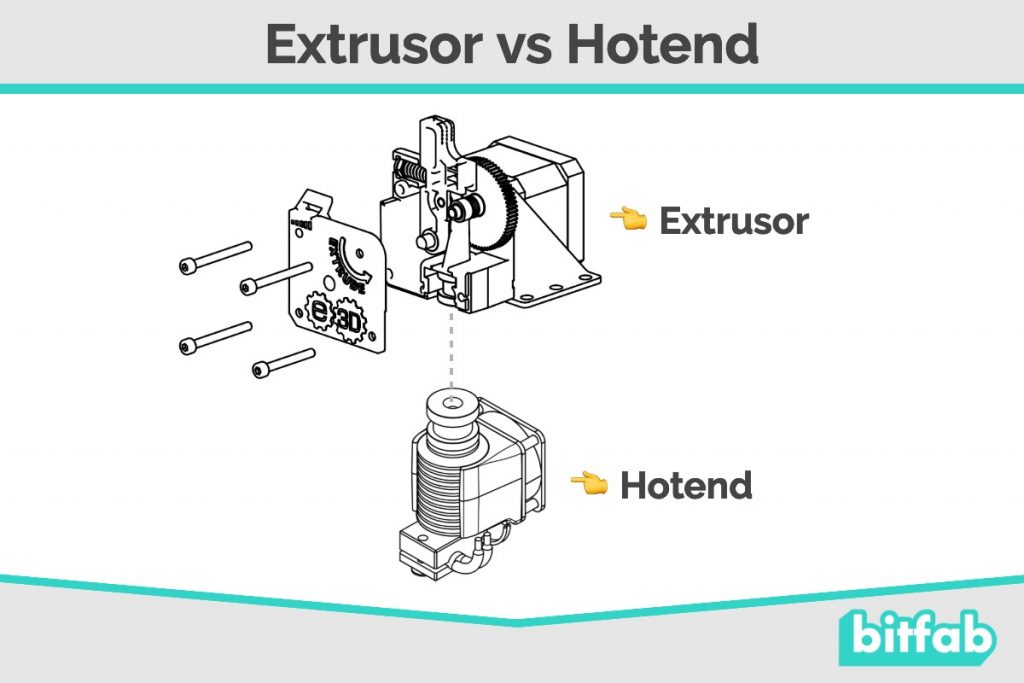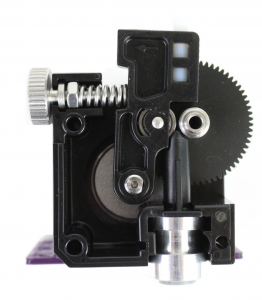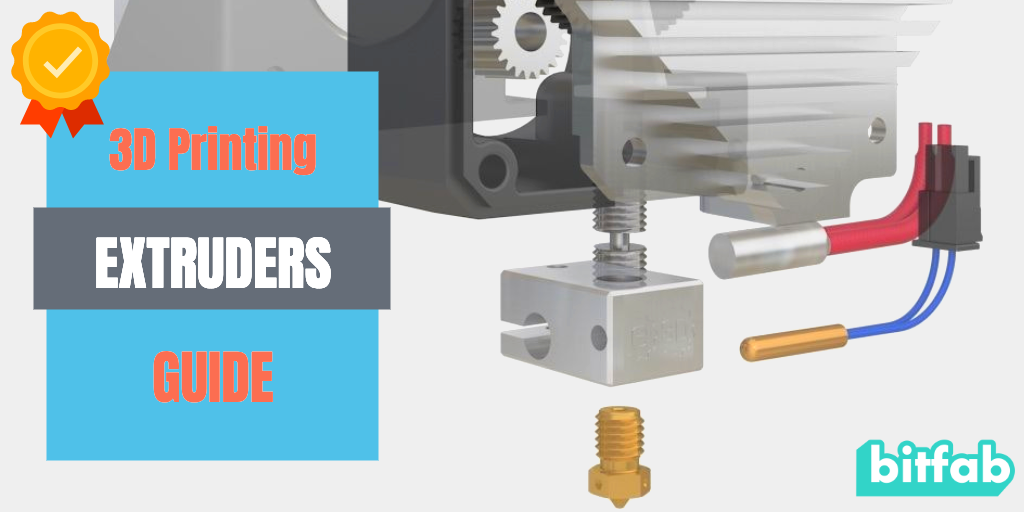The extrusion system is one of the 3 most important points to achieve the best 3D prints, along with the printer mechanics and lamination. That’s why in this article I want to show you how to choose a quality extruder for your 3D printer and why it influences the finishing and reliability of your printer.
First of all we have to respond to the greater confusion surrounding 3D printer extruders. What exactly is the extruder and what is the hotend? Which one should I buy for my printer? Read on and I’ll tell you about it 👇
📖 What do you want to read?
What’s the difference between extruder and hotend?
First of all we have to deal with this topic. I am very angry that we use the term “extruder” very freely.
I myself use it indiscriminately to refer to two different things that are part of the whole extrusion system of a 3D printer: the real extruder and the hotend.
What is the extrusion system? The extrusion system is the set of parts of the printer that drive, conduct, melt and deposit the filament of the printer. It is all the parts that influence your printer to extrude reliably and consistently. That’s why it’s so important to get quality parts.
The extrusion system has 2 main components. This is where we can make the distinction between extruder and hotend.
- The extruder itself, also called feeder drive, is the set that pushes the filament. It usually consists of a motor, a sprocket, a bearing to tighten the filament against the wheel, etc..
- The hotend is the component of the printer where the material is melted and expelled by the tip to deposit it, and usually has parts such as the nozzle or tip, the dissipater, the heater block…
As a picture is worth a thousand words here you have it; with this you will have no doubts left:

Bowden or direct extruder?
Here we are talking about the extrusion system as a whole, which can be bowden (if the extruder and the hotend are separated and connected by a tube, usually made of Teflon) or direct (if the extruder and the hotend are both integrated in the head).
With this other image again you will be all clear at a glance:

Which one do I prefer? The most reliable system you can have is a direct extruder: easier to change the filament, has more strength, fewer things that can fail… Since in the Bitfab printing service the number one priority with printers is usually reliability, I always try to use printers with direct extrusion; and with a good extruder, as I tell you in the next section.
Which extruders do we recommend for your 3D printer?
So, which extruders do we recommend? For a professional printer like the ones we use or for users who want to upgrade their printer with the best components, there are 2 extruders that are the quality kings:

Bondtech BMG. An extruder with 3:1 reduction. It was the first to put 2 wheels to its extruder and it’s highly recommended for flexibles. With all the thrust it has it is much easier to extrude consistently and without jamming problems.
It seems that in Amazon there are only clones; the original costs around 86€.

E3D Titan: An extruder with 3:1 reduction. Very light, compact and simple. I like it the most. It disassembles well and it’s repairable, goes very well with the V6, is easy to find, works super well. It’s at the same level as the Bondtech BMG, although it doesn’t have the twin wheels and it also has impressive strength.
On Amazon there are no original E3D Titan listings either, they are all clones. The original is around 60-70€.
Direct extruder or with reducer?
Reducer extruders, usually with a 3 to 1 reduction, have a set of sprockets that increase the extruder’s strength. Most of the basic extruders that come with Chinese printers are direct (no reducer) extruders. These extruders find it more difficult to print when speeds or layer heights are high and can cause material shortages and part defects.
Buying a Chinese extruder?
There are many Chinese extruders, especially direct ones, such as the MK8 or the ones with the Creality by default. They are not bad but we do not use them in Bitfab, because for a 3D printing service the most important thing is the reliability, and to have a reliable printer, a quality extruder with reducer is essential.
I’ve had Chinese copies of E3D Titan and the ones I’ve tested, although they probably work, didn’t have the quality of the originals. In China there is a lot of variability from one manufacturer to another, so surely there are other Chinese brands of extruders that make better clones. In fact, our friend Campy’s P3Steel has a clone extruder that is of very good quality.
Which hotend do we recommend?
To answer this question we must talk about Teflon (PTFE) hotends. They are the ones that most printers have, and they have a Teflon tube on the inside of the hotend, which reaches the tip where it is heated. Teflon is a consumable, because as it is subjected to temperature for so long it wears away.
My experience with these extruders has not been the best. With all the working hours that Bitfab printers have, there was a time that I was changing Teflon tubes every day. I think that for an individual, a Teflon hotend is more than valid, but for our service they became a very big problem.
What was the solution? The E3D V6. It is the most famous hotend on the market, the classic hotend with the best reputation in the world of 3D printing. Many people who print professionally trust it and many brands of printers (even if they do not say so) have E3D V6 or similar hotends manufactured by E3D and labeled with the brand of the printer manufacturer.

Not everything was perfect with the V6. The first few days or even weeks with the V6 I had a hard time getting the hang of it and printing well, without cuts or jams. Because we worked in open mode, I documented here the problems I was having and the parameters I used to correct them. But once you find the right parameters, it’s an indestructible hotend: it will print until the nozzle itself is blocked, which lasts many hundreds or thousands of hours.
What makes the V6 different? It is 100% metal and has no Teflon in the hot zone. The throat is made of electropolished steel and does not wear out or degrade over time like Teflon, so you can print a lot of kilos without worrying about wear and clogging. In addition, as it is totally metallic, it allows high temperatures that are unthinkable with Teflon hotends.
Can I buy the Chinese E3D V6?
To be honest, I would never recommend buying a Chinese E3D V6 to anyone. Most of those sold as V6 are actually Teflon hotends. It is easier to put Teflon inside a hotend than to make the perfect polish of the walls in the metal itself. If you want a normal extruder you can buy that, but what they sell has nothing to do with a real V6.
Even the Chinese who clone the V6 and risk making the metal throat don’t get the electro-polished throat finish of the V6, so the result is more jams and frustration.
Most people in this world that I know agree that if you are going to invest money in buying a V6, it is best to buy the original directly.
Conclusion
You already have more info to understand extrusion and to choose an extruder and hotend set.
What do I use? My combination is E3D Titan and V6. I know they’re not for everyone because of the price, but in a 3D printing service the most important thing is that the machines are as reliable as possible, and with that combination we can do anything.
If you have any doubt you can ask it in the comments.


What a good article, thank you. John